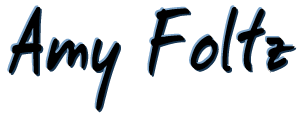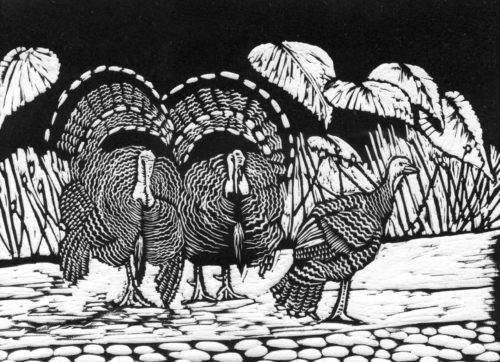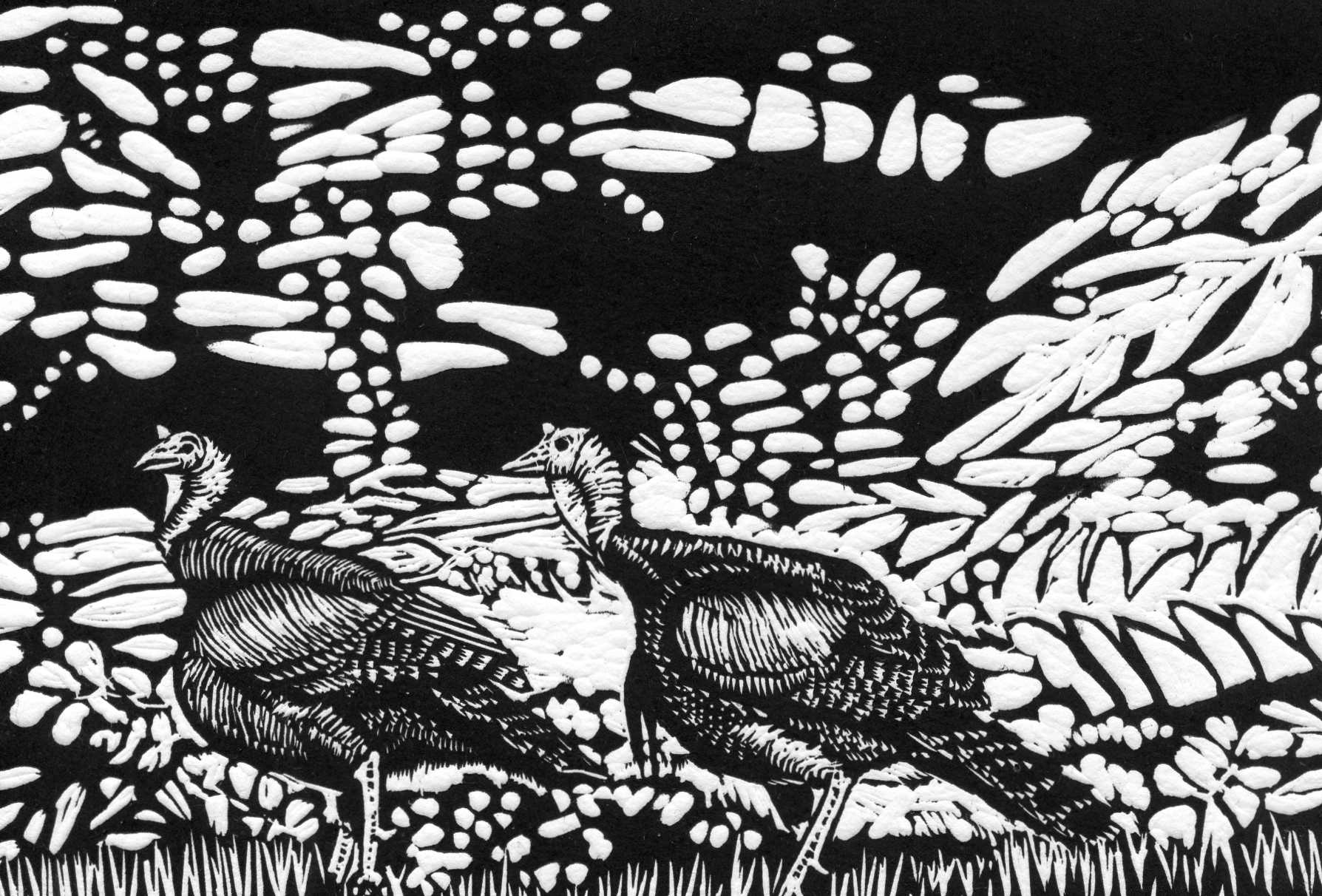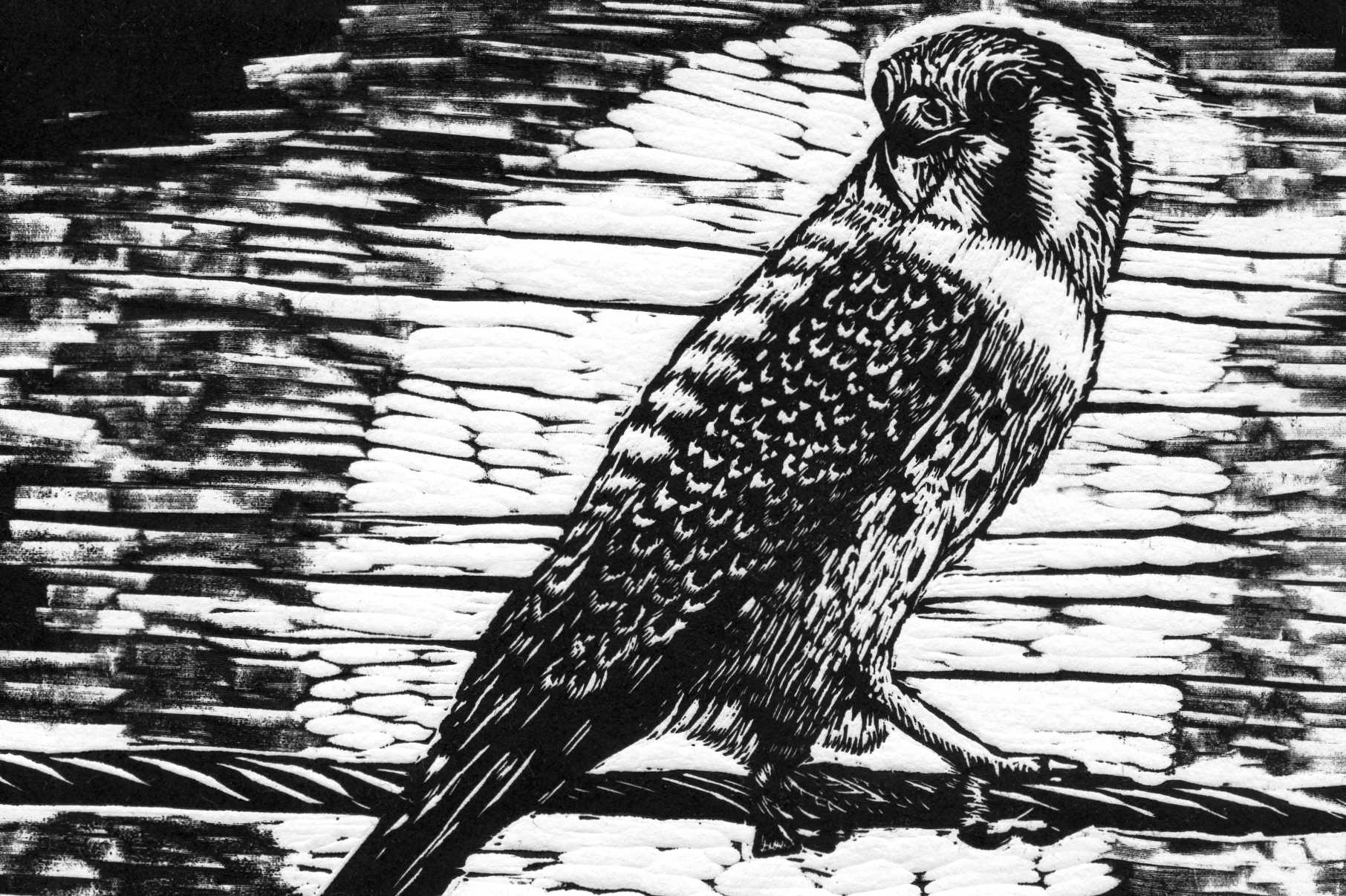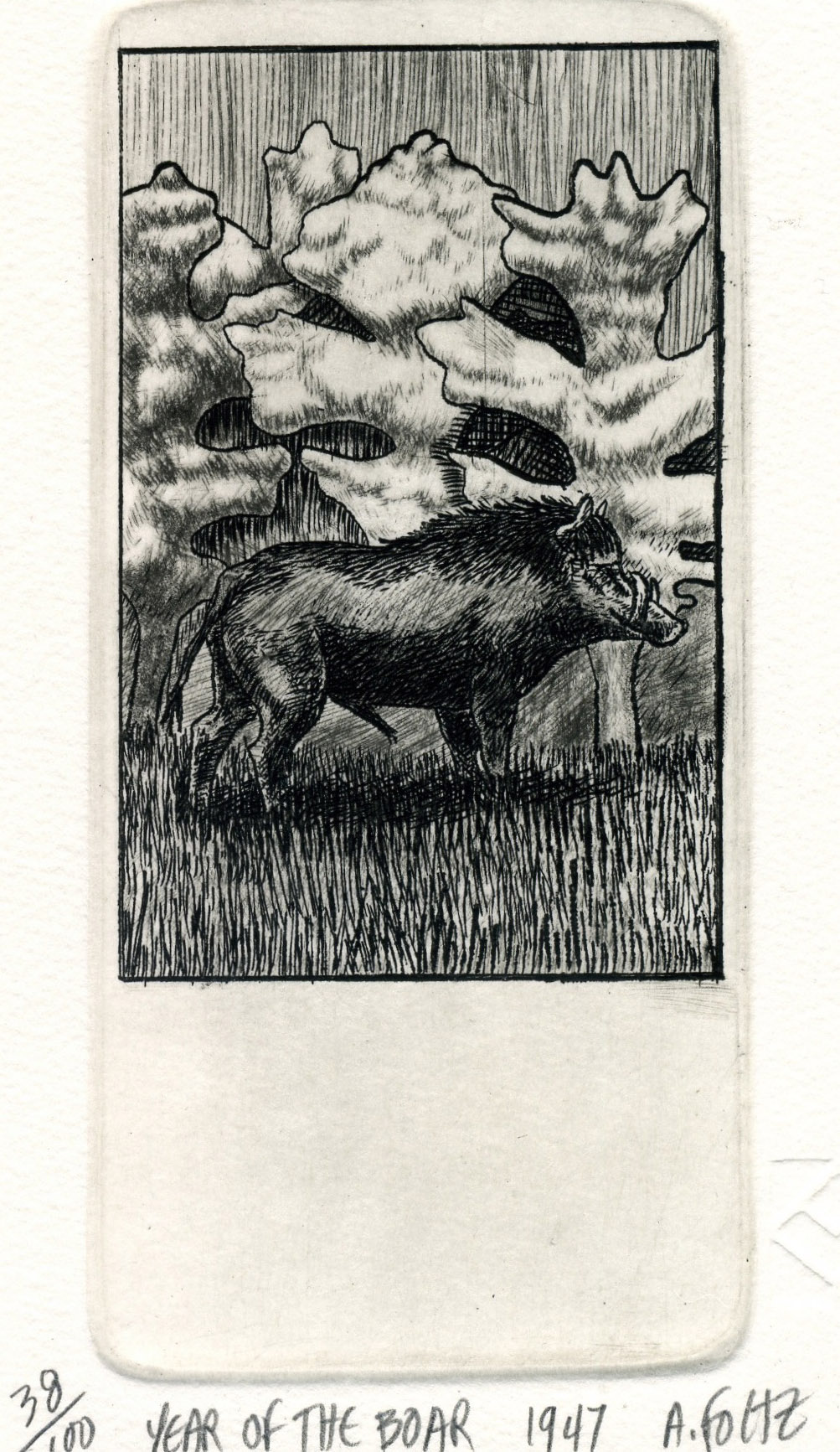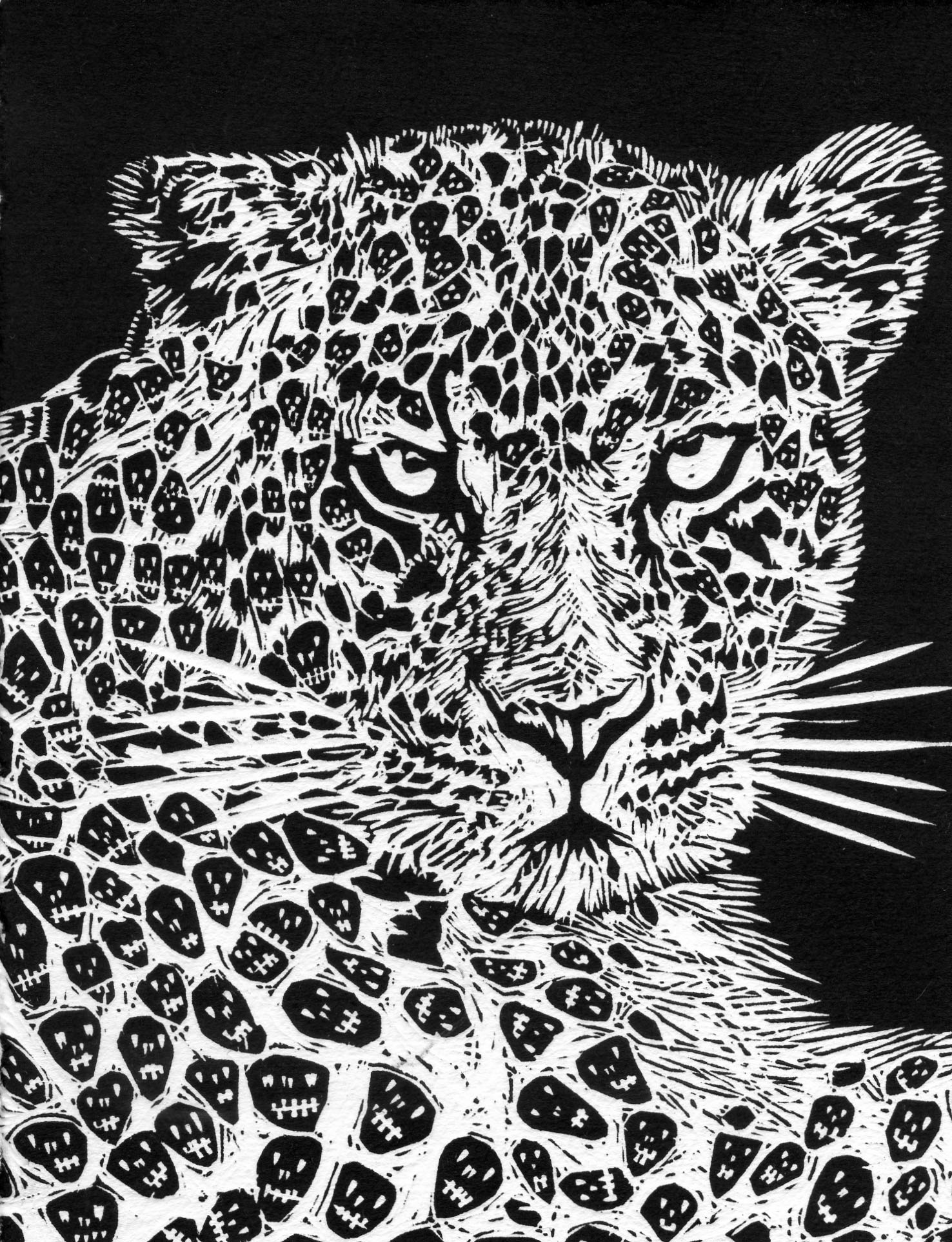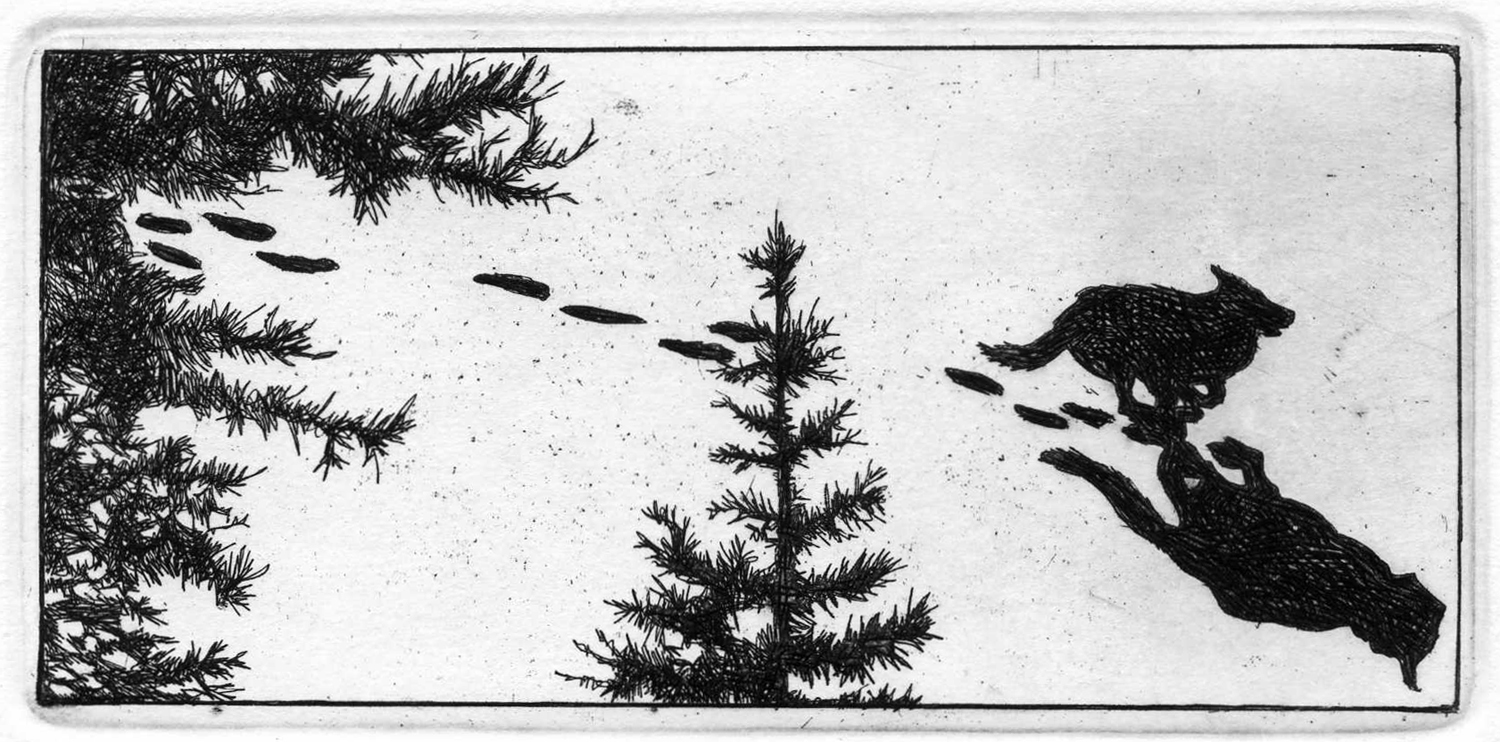Prints
A “print” is an image transferred from a matrix to paper.
There are many types of prints. Intaglio is my favorite (your dollar bills are an intaglio engraving). “Intaglio” is an Italian word that is translated to: in the groove.
For an “etching”, a metal plate is coated with a material that resists a corrosive bath, but is plastic enough to allow one to draw in it. The protected plate is immersed in a corrosive solution (salt, or acid) and the exposed metal is “etched”. This coating is later removed. Ink is applied to the plate, cleaned off of the surface and left in the recesses. Damp paper is used to be pressed into the recesses to extract the inks. The paper is dried flat, and presto! You have an intaglio print.
My next favorite printing method is Relief.
This process of printing involves removing material from the surface of a matrix to acquire white shapes while the remaining surface registers as black shapes. Creating textures creates gray areas. Thus I contrive compositions in black, white and gray. It is all man-made imagery, and I frequently use photos as a reference. Relief is a process that seems to be the opposite of Intaglio. In relief, one leaves the black lines and shapes alone. In intaglio, one leaves the white areas alone.
I was once told that if a composition can’t stand on its own black and white merit, color will not save it.
Color is a whole different ball of wax. Intaglio prints can be colored by special processes, including hand coloring. I favor Chine colle, but will resort to watercolor. With coloring a relief print, one can do a “reduction print”, selectively coloring, (as Karen Kunc does) or hand coloring with a variety of mediums (watercolor, color pencil).
The majority of my prints are small.
I met a print maker from Madison, WI who carried a very small book in his wallet. His daughter made it and it was the essence of intimacy, for him. He could hold it up close and personal. He carried his ‘family’ everywhere he went. I’ve also been inspired by Eastern Block European countries that make “book plate” art, aka Ex Libris. These artists from Europe are attentive to details and do astounding work in small formats.
When I look at prints, I look for what processes were used to produce the effect in the print. It’s a wonderful discovery, with each print.
In 2006, there was a great celebration for the 200 year anniversary of Lewis and Clark’s return from their trek to the Pacific ocean, in Sioux City, IA. I set out to make cards with images of plants, that were in the area 200 years ago.
Out of 30 trials, with the intaglio soft ground process, I got 8 successful impressions from leaves. They were fun, romantic, and the size of a business letter. I like to buy art cards, when I travel. I noticed there were no cards in the Lewis and Clark Interpretive Center in Sioux City. I did not know, but they did not intend to get any, so, I had cards and started to seek venues where they would sell.
I’ve chosen cards as a print format for the intimacy to hold this art form up close.
I’m beginning to tell people I’m a “writer”. “Letter writing” is becoming a lost art form.
I like to write letters on pretty cards.
I use photographs to work from. Sometimes I combine several photos to get one image. I’m not always “true” to the photo, just because my print is not a photo. I use the photograph to advance myself past the “stick-man” stage. Stick-man is important in the game Pictionary, but not for my representation of shapes and forms that I love.
